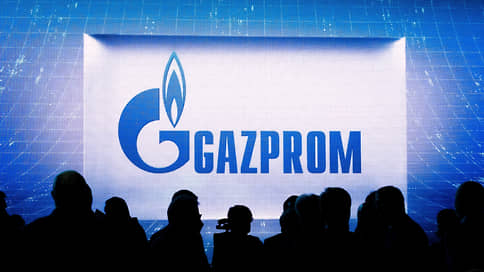The pipe was plugged with a deposit – Newspaper Kommersant No. 183 (7384) dated 10/04/2022
[ad_1]

The stoppage of Russian gas supplies to Italy is due to the fact that from October 1, Austria, through whose territory the gas is transited, introduced mandatory deposits for gas suppliers in order to be able to purchase the gas necessary to balance the system. Gazprom considered these deposits to be too large. Negotiations are now underway on how to reduce this amount. At the same time, the Italian Eni, which is interested in receiving Russian gas, has already announced its readiness to provide guarantees for Gazprom in the amount of €20 million.
The Italian energy company Eni is ready to provide a €20 million guarantee for the resumption of Russian gas supplies through Austria, said the head of the company, Claudio Descalzi.
Gazprom is completely stopped Eni gas deliveries on October 1, citing “the impossibility of transporting gas through Austria” due to the fact that the new Austrian regulations made it impossible to supply Russian gas through the Tarvisio entry point (in September, the average daily supply was about 18 million cubic meters per day). The Austrian regulator E-Control explained on its website that the new rules for gas balancing groups came into force on October 1 and that all market participants have been aware of them for several months.
The essence of the problem is that E-Control began to require deposits from gas suppliers, the funds from which should be used to purchase gas to balance the gas transmission system (in the direction of Austria-Italy, this is carried out by the TAG operator).
In a normal situation, the gas transmission system operator purchases gas for balancing from its own funds (then these costs are reimbursed from the transportation tariff), but now, due to the sharp rise in gas prices and strong price volatility, such purchases can become extremely difficult – in a certain situation, the operator can simply don’t have enough money.
Gazprom considered the amount of the deposit too high, and now they are discussing either reducing this amount or shifting part of the obligations to Eni.
According to “Kommersant”, in general, for the year we can talk about a deposit in the amount of several hundred million euros. At the same time, while the volume of gas destined for Italy, “Gazprom” supplies the Austrian OMV. Gazprom, E-Control and Eni Kommersant did not provide any comments.
As Eni CEO Claudio Descalzi said on October 3, gas supplies were suspended due to the fact that the Russian Gazprom did not provide a guarantee to the Austrian regulator. “We’ll see if we take it upon ourselves,” he said, adding that he hoped “the issue can be resolved this week.”
Eni, one of the largest buyers of Russian gas in the EU with a contract for 23.5 billion cubic meters per year, for the first time faced a decrease in supplies from Russia in the summer after the flow through Nord Stream was reduced and then shut off. The total volume of gas supplies from Russia to Italy in 2021 amounted to 29 billion cubic meters, or about 38% of consumption. But after the outbreak of hostilities in Ukraine, Italy seeks to replace the volumes of Gazprom, including by increasing supplies from Algeria. Claudio Descalzi clarified that at the moment, deliveries through Tarvisio account for about 10% of total imports to Italy.
Now Russian gas is exported to Italy through Ukraine: from the Velke-Kapusany exit point on the border of Ukraine and Slovakia, the gas goes on to the Austrian Baumgarten, from where it goes through the TAG pipeline to Tarvisio. UGS facilities in Italy are now filled to 90.73%, the reserves are about 16.2 billion cubic meters.
The consequences of the termination of Russian gas supplies to Italy will depend on how long the technical issue will be resolved with obtaining permission to supply gas from Gazprom, says Maria Belova, research director at Vygon Consulting. Since, despite the stoppage of pumping, the filling of UGS facilities in Italy continued, and spot prices at the Italian PSV hub on October 3 decreased by 17%, we can say that there is no panic in the market, the analyst believes.
[ad_2]
Source link





